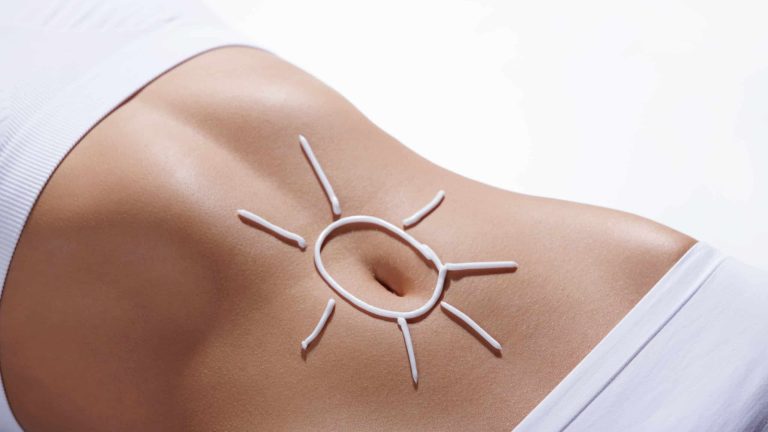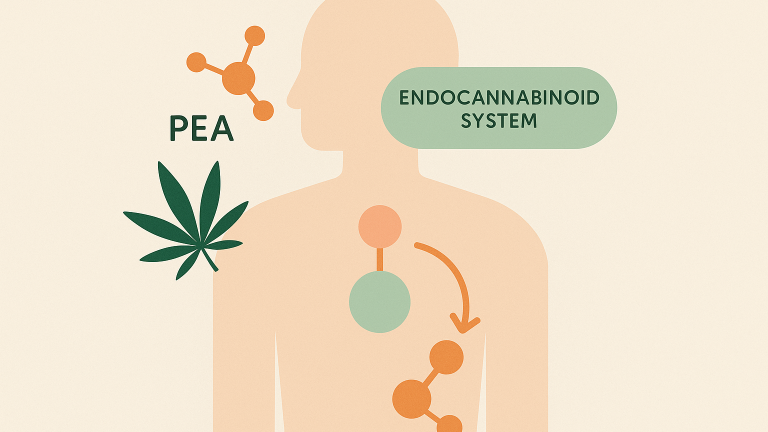What is PEA?
Palmitoylethanolamide (PEA) is a naturally occurring fatty acid amide. Dietary sources include egg yolk, soy lecithin, alfalfa, peanuts, and organ meats. Our body is able to produce it in response to pain, inflammation, and cellular stress. PEA is part of the endocannabinoid family, though it doesn’t act like cannabis or trigger any psychoactive effects.
PEA is believed to work by:
Calming overactive immune cells
Modulating nerve pain and sensitivity
Reducing chronic inflammation without suppressing the immune system
Because of its wide-reaching actions, PEA has been studied in conditions ranging from sciatica and fibromyalgia to irritable bladder, interstitial cystitis, and—yes—endometriosis.
Why PEA may help with endometriosis
It could calm pelvic and neuropathic pain
Endometriosis isn’t just about cramping. Many with the condition experience central sensitization, where the nervous system becomes hypersensitive. This means even light pressure or mild inflammation can feel unbearable.
PEA supports the endogenous system that calms this nerve overactivity, working somewhat like a thermostat for an overstimulated pain response. In several studies, PEA significantly reduced chronic pelvic pain, including pain that had not responded to NSAIDs or surgery.
It may reduce mast cell activation
Emerging research shows that mast cells, part of the immune system, are overactive in endometriosis. These cells release histamine and cytokines, contributing to inflammation, pain flares, and fatigue. PEA is a mast cell modulator, helping reduce their activity without suppressing the immune system as steroids or antihistamines might.
May supports hormonal and nervous system balance
PEA activates PPAR-alpha, a receptor involved in:
- Inflammation regulation
- Energy balance
- Appetite and stress hormone signaling
This can help regulate cortisol, improve mood and resilience, and possibly reduce appetite in some individuals (a surprising bonus for those with estrogen-dominant weight gain).
It may help reduce lesion development (in animal studies)
In rat models of endometriosis, a specialized blend of PEA and the antioxidant polydatin was shown to reduce the size and severity of endometriotic lesions.
The treatment improved fibrosis (scar tissue), reduced mast cell counts, and lowered biological markers linked to inflammation, new blood vessel growth (angiogenesis), and nerve growth.
While human studies are still needed, this suggests that PEA may do more than relieve pain. It could potentially help slow or reverse some of the underlying processes that drive lesion growth. But more studies are needed to confirm the results especially since the study included a second compound: Polydatin.
Polydatin is a phytochemical derivative of resveratrol. It is found in grapes, berries, peanuts, pistachio, and cocoa- or chocolate-containing products. It is also found in red wine, but alcohol consumption is not recommended for women with endometriosis as it is known to increase inflammation and cause flareups.
Other surprising reported benefits of PEA
Appetite regulation (some users note natural appetite suppression)
Improved sleep quality
Mood stabilization and reduced anxiety
Muscle and joint pain relief
Non-sedating, non-addictive, and safe for long-term use
PEA does all this without thinning the blood, altering hormones, or irritating the gut—which makes it ideal during bleeding phases, something few other anti-inflammatories can claim.
How to take PEA for endometriosis
Recommended dosage
Starting dose: 300 mg twice daily (morning + evening)
For flares: up to 600 mg twice daily, or 1200 mg/day
Best taken with food that contains fat to aid absorption
Results may take 2-4 weeks, so consistency matters
Recommended products
If you would like to try PEA for yourself, we recommend the following products. These products are included based on ingredient profiles that align with current research. Information about sourcing and benefits is provided by the makers.





